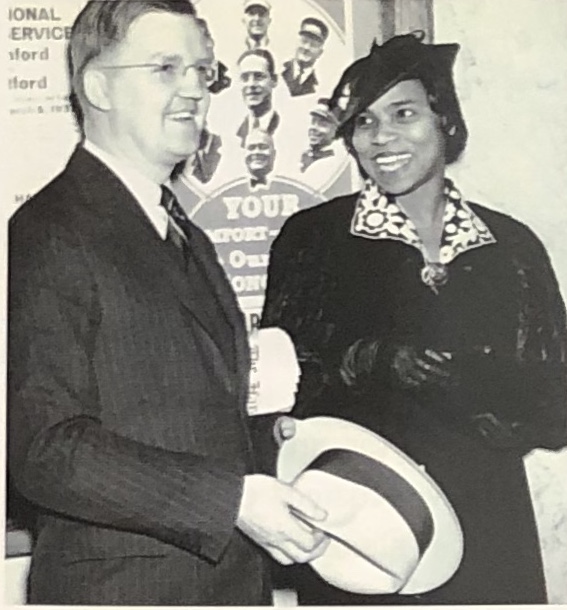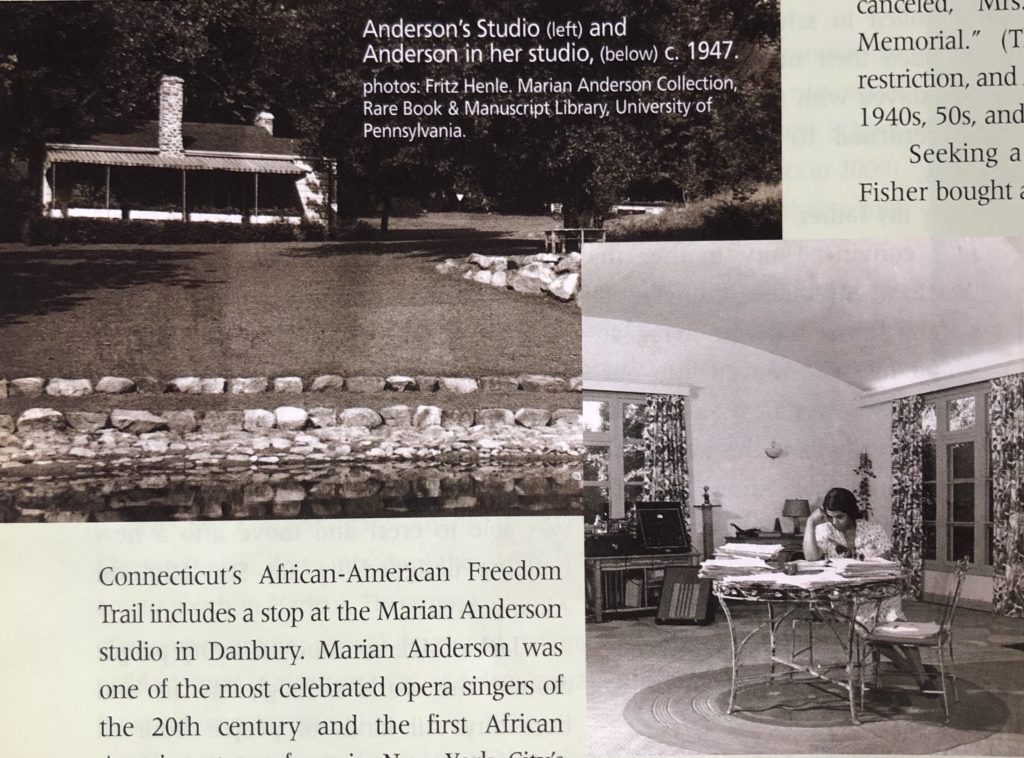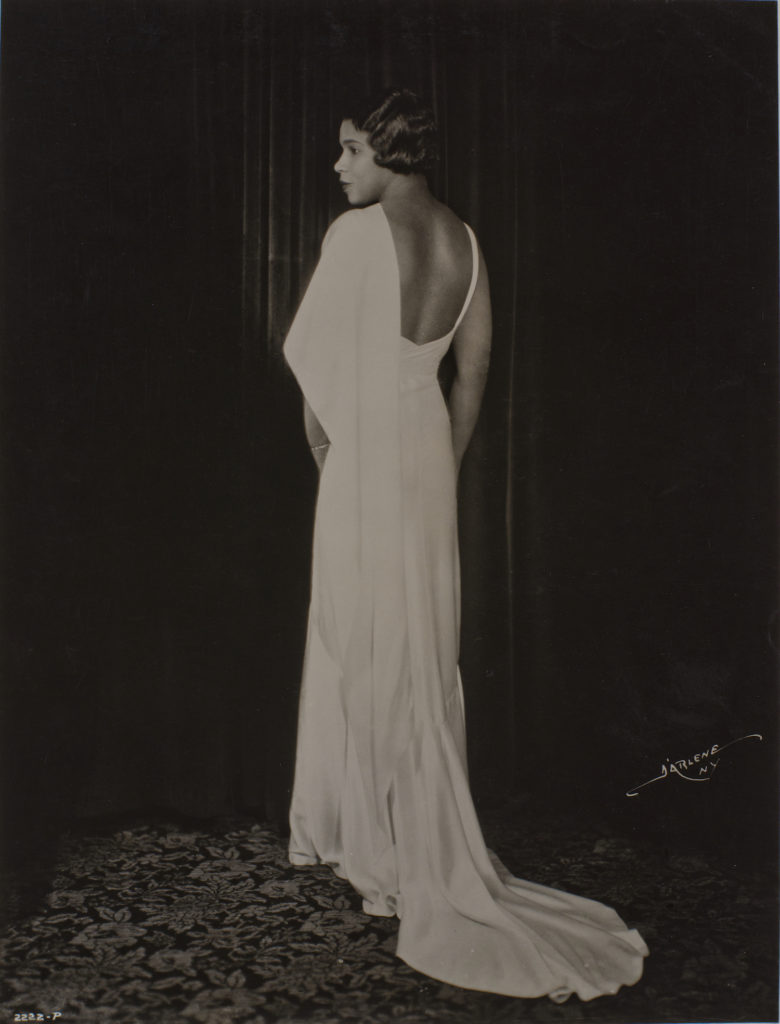By Jessica Colebrook
(c) Connecticut Explored Inc. FALL 2008
Subscribe/Buy the Issue!
Connecticut’s African American Freedom Trail includes a stop at the Marian Anderson studio in Danbury. Marian Anderson was one of the most celebrated opera singers of the 20th century and the first African American to perform in New York City’s Metropolitan Opera, in 1955. Anderson and her husband, architect Orpheus Fisher, established a home base in Danbury on Joe’s Hill Road in 1940, naming it Marianna Farm. The 24-by-20-foot practice studio was saved in 1999 by the Connecticut Trust for Historic Preservation from destruction by developers who proposed a privately owned subdivision on the land. The studio was relocated to the Main Street site of the Danbury Museum and Historical Society.
Born in Philadelphia on February 27, 1897, Anderson earned the nickname “Baby Contralto” by the age of six. She became renowned worldwide for her “rich in timbre” and “smooth as satin” voice, as a 1930 review in the New York Telegram noted, yet in her home country Anderson struggled for success. In a now famous 1939 incident, she was denied use of Constitution Hall in Washington D.C. by the Daughters of the American Revolution, proprietor of the building that had, in 1932, inserted a “white artist only” clause into its rental contract. First Lady Eleanor Roosevelt resigned from the D.A.R., explaining that she was in “complete disagreement with the attitude” the organization showed in banning Anderson from Constitution Hall.

William Mortensen of The Bushnell with opera singer Marian Anderson. Shepherd M. Holcombe Archives, Bushnell Center for the Performing Arts
What followed is the concert for which Marian Anderson is best remembered. On April 9, 1939, Anderson sang from the steps of the Lincoln Memorial, directly south of Constitution Hall, giving a free outdoor concert to an audience of 75,000. The statue of Abraham Lincoln stood steadfast behind her. Alan Keiler, in his 2000 biography Marian Anderson: A Singer’s Journey, reported that years later Anderson simply explained that after the concert was initially cancelled, “Mrs. Roosevelt then invited her to sing at the Lincoln Memorial.” (The D.A.R. later did away with the whites-only restriction, and Anderson sang at Constitution Hall several times in the 1940s, 50s, and 60s.)
Seeking a retreat away from the public eye, Anderson and Fisher bought a three-story Victorian Farmhouse on 100 acres of land in Danbury in 1940. Keiler reports that they chose the site because it was the only property whose seller was not aware of who Fisher’s wife was. (Fisher, while African American, was light-skinned enough not to attract scrutiny.) At Marianna Farm, Anderson could regroup after months of touring and rehearse undisturbed in the studio built with a cove ceiling that allowed for favorable acoustics. A kitchen and washroom were added in anticipation of long hours spent at the piano by Anderson and her accompanist, Franz Rupp.
Over the more than four decades they lived in Danbury, Anderson and Fisher became valued citizens throughout the town. Anderson joined the Danbury Music Centre Board of Directors, ensuring that she stayed musically connected to her local community. Fisher designed Danbury’s New Hope Baptist Church, where they were active members and where Anderson held a memorial for her husband after he died in 1986. Marian also helped to open, in 1966, the Danbury Museum’s Huntington Gallery, the modern exhibit building at the Danbury Historical Society. She is remembered as being friendly to all she crossed paths with. Anderson lived on Marianna Farm until 1992, a year before she died at age 96. For 50 years she traveled the world, but there is no doubt Danbury was where Marian Anderson felt most at home.

top: Marian Anderson’s studio, bottom: Anderson in her studio, c. 1947. photos: Fritz Henle, Marian Anderson Collection, Rare Book & Manuscript Library, University of Pennsylvania
Today the blue clapboard studio contains relics of a bygone era—compositions from which the famed contralto practiced, black-and-white photos of life on the farm, and four vintage gowns Anderson wore while performing on stage. It is now used as an exhibition space and for small concerts, and it is available for weddings. The historical society offers educational programs about Marian Anderson every February.
Jessica Colebrook was an intern for Connecticut Explored.
Explore!
Read more about Connecticut’s Art History on our TOPICS page.
Read more about the African American experience in Connecticut on our TOPICS page.
Read more about Notable Connecticans on our TOPICS page.
The Danbury Museum and Historical Society, 43 Main Street, Danbury
Tours of the studio are available May to October. For hours and more information call (203)743-5200 or visit www.danburyhistoricalsociety.org.

